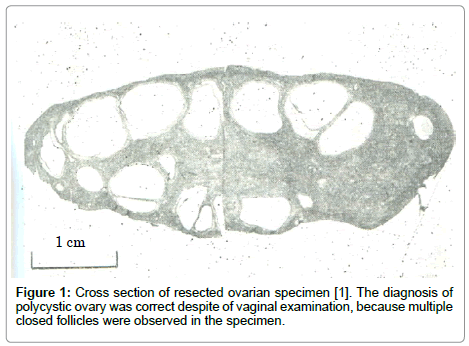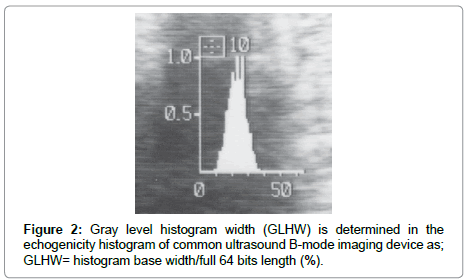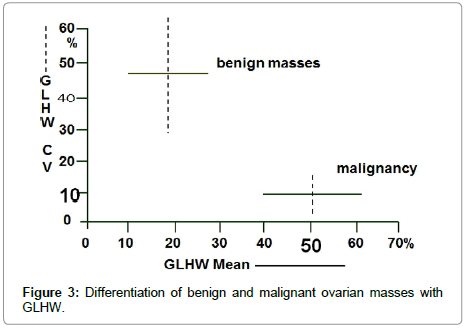Research Article, J Genit Syst Disord Vol: 6 Issue: 3
Diagnosis of Ovarian Masses before and after Ultrasound Imaging and Tissue Characterization
1Departments of Obstetrics and Gynecology, Kyushu University, Japan
2Departments of Obstetrics and Gynecology, Tottori University Medical School, Japan
*Corresponding Author : Kazuo Maeda
3-125 Nadamachi, Yonago, Tottorikenn, Japan
Tel: 81-859-22-6856
Fax: 81-859-22-6856
E-mail: maedak@mocha.ocn.ne.jp
Received: July 18, 2017 Accepted: August 16, 2017 Published: August 22, 2017
Citation: Maeda K, Kihaile PE (2017) Diagnosis of Ovarian Masses before and after Ultrasound Imaging and Tissue Characterization. J Genit Syst Disord 6:3. doi: 10.4172/2325-9728.1000175
Abstract
A polycystic ovary case was diagnosed by subjective vaginal examination and reported in 1959. Real-time B-mode was common in 1980s, where ovarian masses were diagnosed objectively, while malignancy was diagnosed with image patterns of ovarian masses. Thus, ultrasonic tissue characterization was intended, while it needed particular computer and software, which made it unable to use in common clinic. Maeda intended to apply echogenicity histogram of common B-mode devices and created gray-level histogram width (GLHW) and reported in 1998, and Khaile applied it to the diagnosis of malignant ovarian masses. Mean GLHW of 5 connecting ROIs was significantly larger in malignant masses than benign, while the coefficient of variation (CV) of GLHWs was significantly smaller in malignancy than benign masses. Thus, malignant ovarian masses were diagnosed by GLHW analysis.
Keywords: Ovary; Malignant masses; Vaginal palpation diagnosis; Ultrasonic tissue characterization; GLHW; B-mode imaging device
Introduction
Polycystic ovary was diagnosed by the author with Stein- Leventhal syndrome in the sterility, amenorrhea, small uterus and bilateral adnexal masses detected with bimanual vaginal examination in 1959 In Kyushu University. Although the diagnosis was correct (Figure 1) and outcome was favorable, clinic chief was afraid of subjective diagnosis, due to the lack of objective diagnostic method [1], which would be required to achieve general agreement. Ovarian masses was objectively diagnosed by the contact compound scanning of ultrasound probe in 1970s, however, malignancy diagnosis was unable. Benign and malignant ovarian masses were differentiated with cross-sectional image patterns of ovarian masses, using linear or convex scan abdominal and vaginal scan real-time generally focusing B-mode imaging, under pattern classification in 1980s. Although strict ultrasound tissue characterization was scientifically studied but using particular computer and software [2], therefore, it was hard to use it in the clinical medicine. Thus, Maeda intended to analyze echogenicity histogram of ultrasound B-mode device, that was graylevel histogram width (GLHW) (Figure 2), and various subjects were studied including ovarian masses with clinical ultrasound tissue characterization since 1998 [3-5].
Figure 1: Cross section of resected ovarian specimen [1]. The diagnosis of polycystic ovary was correct despite of vaginal examination, because multiple closed follicles were observed in the specimen.
Methods
The GLHW was standardized among various ultrasound B-mode devices and a 3D ultrasound machine using RMI412A ultrasound phantom (Radiation Measurement Inc. Middleton, Wisconsin) by the author [3], where GLHW value was unchanged if image gain controlled, but image contrast should be the lowest, because GLHW increased if the image contrast increased. Aloka ultrasound B-mode imaging devices (Tokyo Japan) detected ovarian masses, where five connecting ROIs were set at ovarian mass ultrasonic B-mode images, and obtained five gray level histograms and five GLHW values in a ovarian tumor. The masses were pathologically studied after surgery, where the tumors were classified into benign and malignant groups, while coefficient of variation (=SD/mean, CV) and mean values of GLHW were compared between benign and malignant groups of ovary [6] (Figure 3).
Results and Discussion
The coefficient variation (CV) of GLHW was around 30-60 % in benign masses, which was clearly larger than malignancy, which was 2-15 %. The reason of difference would be achieved because benign masses were composed of various tissues including cystic fluid, cystic epithelium, connective tissue, etc. while malignant mass was mainly composed of malignant neoplastic cells (Figure 3).
The mean of GLHW was 51 ± 11% and significantly larger in malignant masses than the mean GLHW of benign one which was 18 ± 10% (Figure 3).
In summary, mean GLHW was larger and CV was smaller in malignant ovarian masses than benign tumors. Thus, ovarian malignancy was numerically diagnosed by the GLHW levels.
Although ovarian benign teratoma showed intermediate values of GLHW values between benign and malignant ovarian masses, it was not added the differentiation of benign and malignant ovarian masses, because it was easily diagnosed by niveau formation in ultrasonic B-mode study.
Conclusion
The ovarian masses were studied initially with manual vaginal examination in polycystic ovary in 1950s, by which the author learned the importance of objective imaging diagnosis. After contact compound scan sonography and real-time electronic scan B-mode, we studied ovarian masses with a clinical ultrasound tissue characterization, which was gray level histogram width (GLHW), and achieved the success to differentiate ovarian malignancy from benign ovarian masses in 1990s.
References
- Koga K, Maeda K (1959) Stein-Leventhal syndrome. Clinics and Researches 36: 1306-1314.
- Akaiwa A (1989) Ultrasonic attenuatin character estimated from backscattered radiofrequency signals in obstetrics and gynecology. Yonago Acta Medica 32: 1-10.
- Maeda K, Utsu M, Kihaile PE (1998) Quantification of sonographic echodensity with grey level histogram width: a clinical tissue characterization. Ultraound Med Biol 24: 225-234.
- Maeda K, Utsu M, Yamamoto N, Serizawa M (1999) Echogenicity of fetal lung and liver quantified by the gray level histogram width. Ultrasound Med Biol 25: 201-208.
- Maeda K, Utsu M, Yamamoto N, Serizawa M, Ito T (2002) Clinical tissue characterization with gray level histogram width in obstetrics and gynecology. Ultrasound Rev Obstet Gynecol 2: 124-128.
- Kihaile PE (1989) Ultrasonic tissue characterization of ovarian tumors by the scanning of gray level histograms. Yonago Acta Medica 32: 251-250.
 Spanish
Spanish  Chinese
Chinese  Russian
Russian  German
German  French
French  Japanese
Japanese  Portuguese
Portuguese  Hindi
Hindi 



